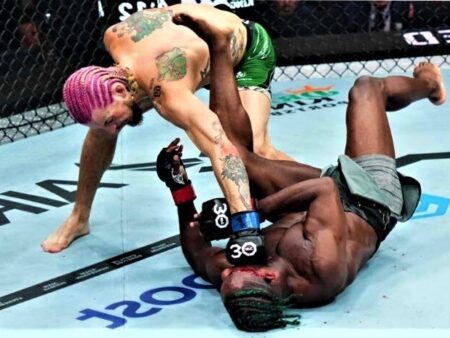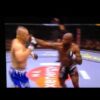In an era where professional chess is enjoying unprecedented growth and visibility, a curious paradox emerges: the very formats designed to entertain are pushing elite players to their strategic limits, creating a demanding calendar that might just be leading to an epidemic of “format fatigue.”
Imagine a tennis player alternating between Wimbledon`s hallowed grass courts and the red clay of Roland Garros on a weekly basis, or a cricketer switching between Test matches, One Day Internationals, and T20s every few days. This isn`t a hypothetical sports nightmare; it`s the daily reality for the world`s top chess grandmasters.
The Dizzying Dance of Formats
The modern chess calendar has become a dizzying kaleidoscope of classical, rapid, blitz, and even avant-garde formats like Freestyle Chess. Barely has a player settled into the serene, deep calculations of a classical game before they are thrust into the high-octane, intuitive chaos of a blitz battle. Consider the schedule of reigning World Champion Gukesh Dommaraju: one week he`s in St. Louis for intense rapid and blitz championships, the next he`s diving into the slow burn of classical chess at the Sinquefield Cup. It`s enough to make one`s strategic neurons short-circuit.
This isn`t an isolated incident. Indian prodigy Arjun Erigaisi recently endured a similar gauntlet: classical chess in Norway, followed swiftly by World Rapid & Blitz Team Championships, then back to classical at the UzChess Cup, all while squeezing in online Champions Chess Tour events with completely different time controls. Dutch Grandmaster Anish Giri, a formidable force across formats, candidly admits to ESPN, “It`s a big challenge for me indeed and I don`t know if everybody likes it, but I always feel that I am one step behind.” One can almost hear the gears grinding in their brains, attempting to recalibrate.
The Shadow of Burnout: A Hefty Price Tag
Beyond the mental gymnastics, there`s a more insidious consequence: burnout. Coach RB Ramesh, a veteran observer of the chess circuit, attributed R Praggnanandhaa`s slump at the close of 2024 directly to an incessant schedule. No time for reflection, no moment to recalibrate, just an endless procession of tournaments. Arjun Erigaisi echoed this sentiment, noting that the lack of rhythm between classical events has adversely impacted his results.
While the proliferation of these new, often lucrative, tournaments injects much-needed excitement and prize money into the sport, it inadvertently creates a relentless treadmill for its stars. The question then becomes: how much strategic integrity and player well-being are we willing to trade for commercial expansion?
Unraveling the Strategic Labyrinth
So, what exactly makes this format switching so challenging? Ramesh explains that rapid and blitz demand an entirely different mindset from classical chess. Faster time controls encourage experimental openings and greater risk-taking, as opponents simply lack the luxury of time for perfect counter-calculations. Preparation shifts from meticulous, in-depth line analysis for a single opponent to a broader, more flexible repertoire for multiple, stylistically diverse adversaries each day.
Coaches are now assembling specialized teams for their players, a necessity born out of the impossible demand for players to master every nuanced opening across all formats. Yet, even within the “same” format, regulations can vary wildly. A classical event in Chennai might offer no time increments, while another in the FIDE Grand Swiss grants time additions after specific move counts. The core game remains, but the rules of engagement are a moving target, adding another layer of complexity to an already intricate sport.
Freestyle Chess: The Ultimate Test of Adaptability
Then there`s Freestyle Chess, a disruptive format that intentionally strips away opening preparation by randomizing the starting position. It`s a true test of raw chess understanding, but even here, the challenge is compounded by its dual nature: rapid group stages followed by classical knockouts. Players must adapt not only to randomized openings but also to dramatically different time philosophies within the same event.
Classical: The Undisputed Sovereign
Despite the siren call of faster, flashier tournaments, there`s a unanimous consensus among players and experts: classical chess reigns supreme. It`s where the most profound battles are waged, where strategic depth is paramount, and where the title of World Champion holds its true prestige. As German Grandmaster Vincent Keymer points out, players are in Chennai precisely to find their rhythm in classical chess, eyeing the qualifiers for the coveted Candidates tournament, the gateway to the World Championship match.
World Champion Viswanathan Anand advises against players ruling out any format, acknowledging that consistent success across all may be elusive, but excellence isn`t guaranteed in any one. Yet, the path to the classical crown, once a relatively straightforward ascent, is now strewn with a multitude of “distractions” – albeit highly remunerative ones – making the journey far more arduous.
The Future of the Royal Game
The burgeoning commercial success of chess is a double-edged sword. While it elevates the sport, it also imposes an unprecedented strain on its top performers. The challenge for organizers and federations is to strike a delicate balance: to foster innovation and capitalize on new formats without compromising the health, focus, and ultimate competitive integrity of the players. Perhaps, as Keymer suggests, consulting the athletes themselves on calendar planning could pave the way for a more sustainable and less exhausting future for the royal game.








